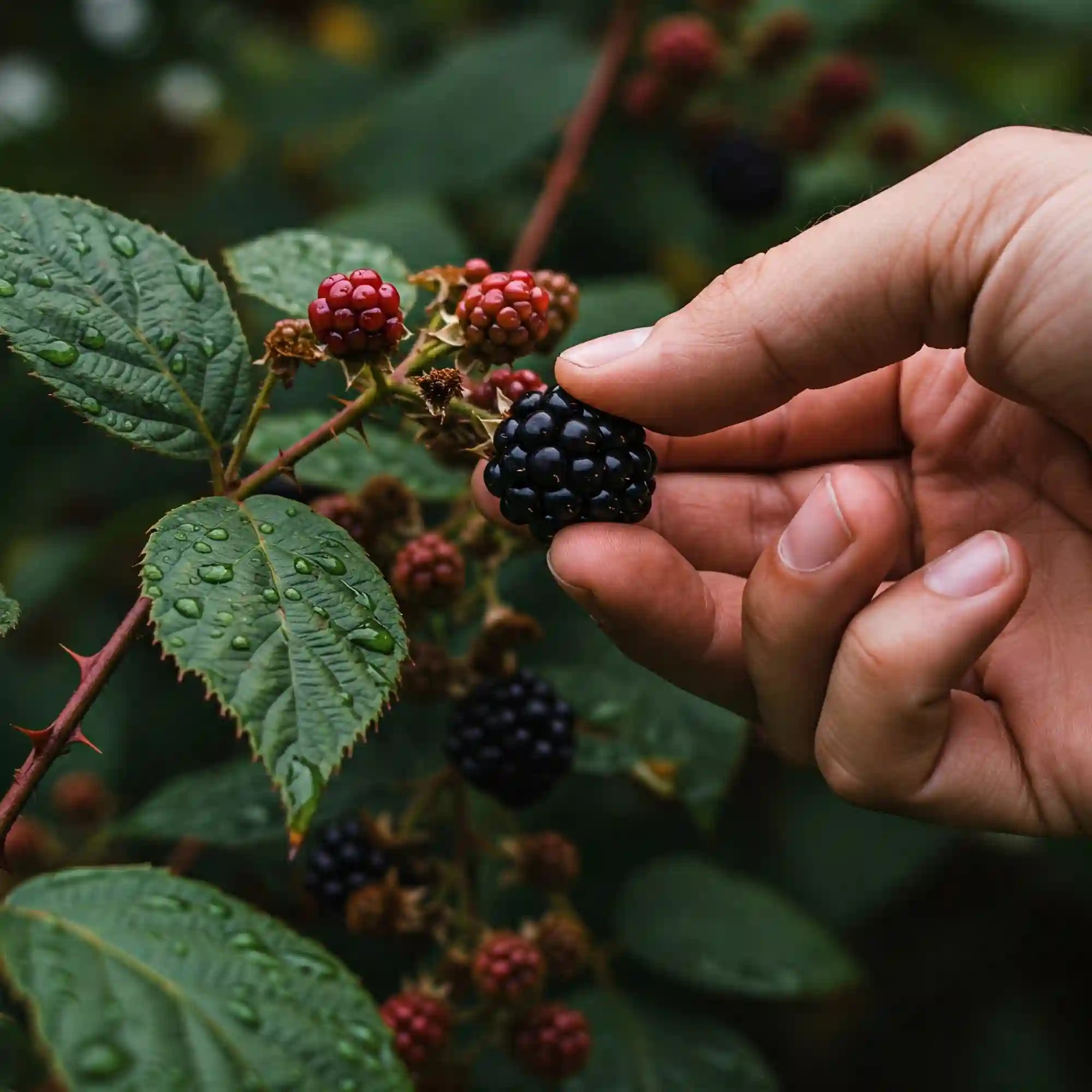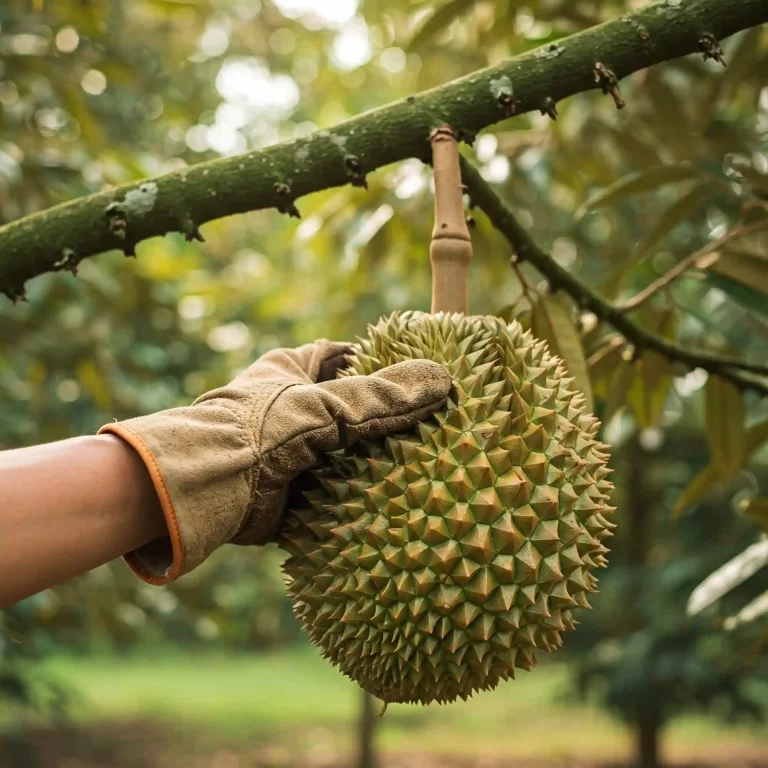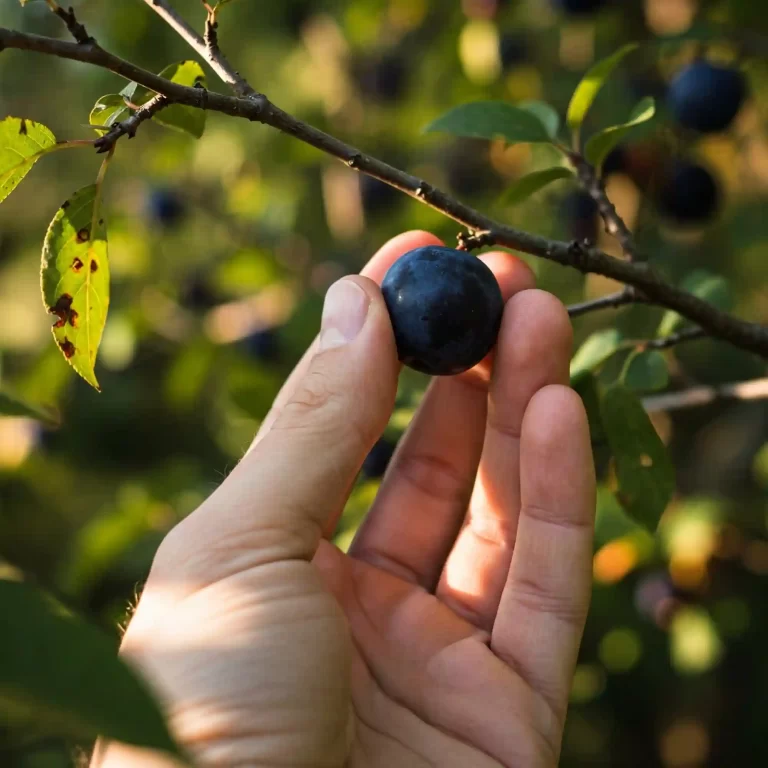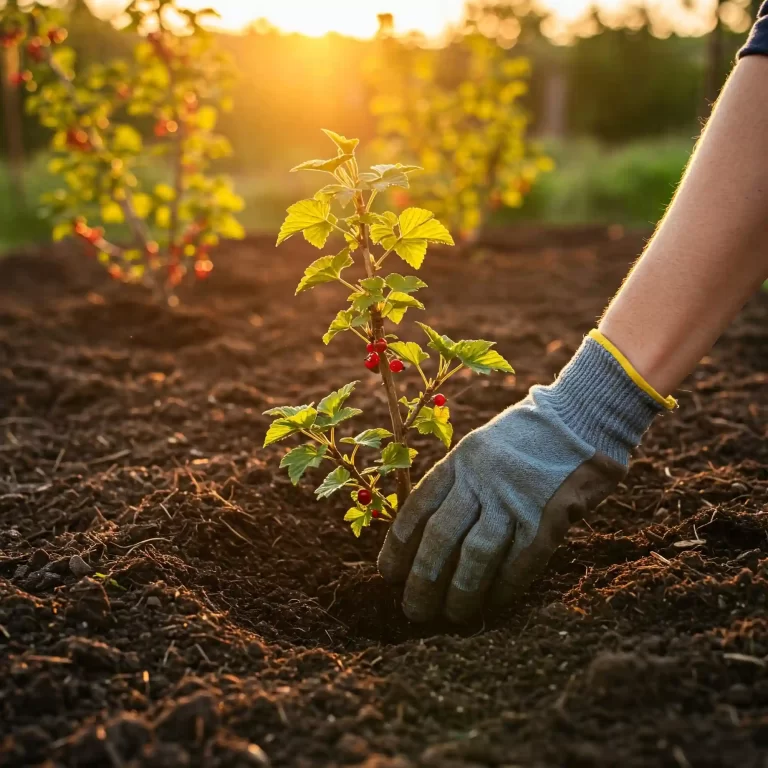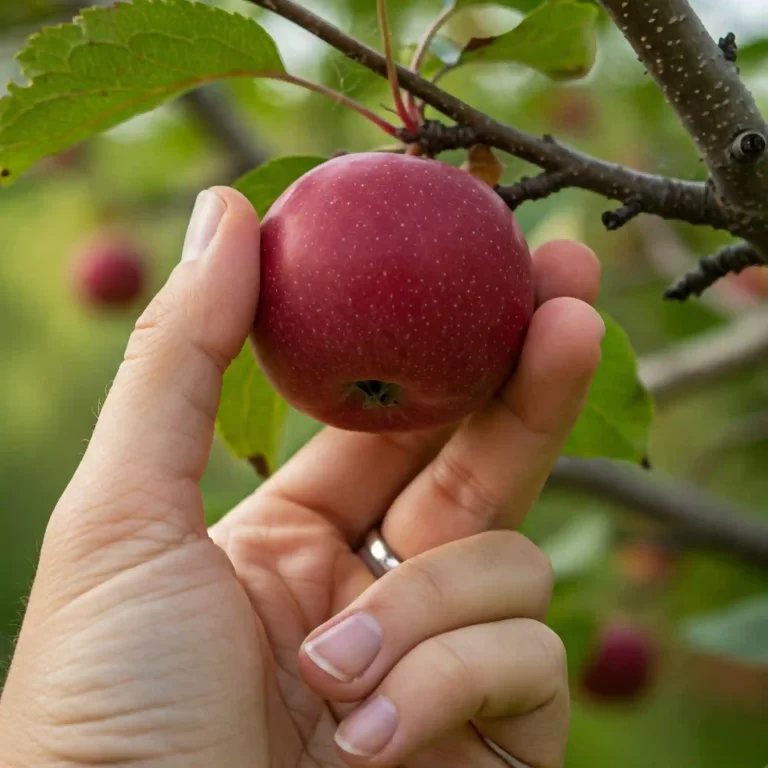Have you ever dreamt of stepping into your backyard and picking sun-warmed, juicy blackberries straight from the vine? The reality of growing these delectable fruits can sometimes feel daunting, with concerns about soil, pests, and proper care swirling in your mind. It’s frustrating to see your plants struggle, yielding only a handful of berries or none at all. You crave the satisfaction of a bountiful harvest, the taste of homegrown sweetness, and the pride of nurturing your own food source. Well, you’re not alone. I’ve been there, and I’ve learned that with the right approach, you can cultivate a thriving blackberry patch that rewards you with abundant harvests year after year. Let’s dive into the 10 secrets that will transform your garden into a blackberry paradise.
10 Secrets to Growing Juicy Blackberries: A Gardener’s Guide
Do you dream of a backyard overflowing with the sweet, juicy taste of homegrown blackberries? You’re not alone. But the reality can be frustrating. Thin, tart berries? Pests and diseases decimating your plants? Don’t despair! With the right approach, you can cultivate a thriving blackberry patch that yields abundant harvests year after year. This guide will reveal 10 secrets to effortlessly grow luscious blackberries, from choosing the perfect variety to mastering pruning techniques.
Understanding Blackberry Varieties: Choosing the Perfect Fit for Your Garden
Choosing the right blackberry variety is crucial for a successful and rewarding growing experience. Just like selecting the perfect tomato cultivar for your region, understanding the nuances of blackberry varieties will ensure you’re planting the right plants for your garden and your taste buds.
Types of Blackberry Varieties
Blackberry varieties can be broadly categorized into two main types:
- Erect Varieties: These varieties grow upright, forming a more compact bush. They are generally easier to support and manage, often requiring less pruning and trellising. Popular erect varieties include ‘Natchez,’ ‘Chester,’ and ‘Prime-Ark Freedom.’
- Trailing Varieties: As the name suggests, trailing varieties sprawl and require more support, such as trellises or fences. They can be more vigorous growers and often produce larger yields. Popular trailing varieties include ‘Black Satin,’ ‘Kiowa,’ and ‘Apache.’
Thorniness
A key consideration when choosing a variety is thorniness. While some gardeners enjoy the challenge of navigating thorny canes, others prefer the convenience of thornless varieties. Thornless varieties have become increasingly popular, making blackberry growing more accessible and enjoyable for many.
Fruiting Season
Blackberry varieties have different fruiting seasons. Some varieties are early-season producers, while others ripen later in the summer. Consider when you want to enjoy your harvest and choose varieties that align with your preferences.
Flavor Profiles
Blackberry flavor can vary significantly between varieties. Some varieties are known for their sweetness, while others have a more tart or tangy flavor. Consider your preferred taste and choose varieties that will satisfy your palate.
Disease Resistance
Blackberry bushes are susceptible to certain diseases, such as cane blight and powdery mildew. Choosing varieties with good disease resistance can help minimize the risk of disease problems and reduce the need for disease management practices.
Research and Selection
Once you understand the different types of blackberry varieties and their characteristics, it’s time to do your research. Consult with local nurseries, read online reviews, and talk to other gardeners in your area to gather information about the best varieties for your specific region and growing conditions.
Selecting a Prime Location: Sunlight, Soil, and Drainage
Now that you’ve chosen the perfect blackberry varieties for your garden, it’s time to select the ideal location for your new plants. The success of your blackberry patch hinges on providing the right growing conditions.
Sunlight Requirements
Blackberry bushes are sun-loving plants. They require at least 6-8 hours of direct sunlight per day to thrive. Insufficient sunlight can lead to reduced fruit production and weaker canes.
When choosing a location, look for a spot that receives full sun throughout the day. Avoid areas that are shaded by trees or buildings, as these can significantly reduce sunlight exposure.
Soil Considerations
Blackberries prefer well-drained soil that is rich in organic matter. Heavy clay soils can retain too much moisture, which can lead to root rot. Sandy soils, on the other hand, may not retain enough moisture.
Here are some tips for preparing the soil for your blackberry bushes:
- Test your soil pH: Blackberries prefer slightly acidic soil with a pH between 6.0 and 6.5. You can purchase a soil pH test kit from your local garden center.
- Amend the soil: If your soil is heavy clay, amend it with compost, sand, and organic matter to improve drainage and aeration.
- Incorporate organic matter: Adding compost or well-rotted manure to the soil will improve its fertility and water-holding capacity.
Drainage
Good drainage is crucial for blackberry health. Poor drainage can lead to root rot, which can severely damage your plants. If your soil is prone to waterlogging, consider planting your blackberries in raised beds.
Here are some signs of poor drainage:
- Standing water after heavy rainfall
- Soggy soil even after a few days of dry weather
- Slow-growing plants with yellowing leaves
If you suspect that your soil has poor drainage, you may need to take steps to improve it before planting your blackberry bushes.
Planting Your Blackberry Bushes: A Step-by-Step Guide
Now that you’ve selected the perfect location and prepared the soil, it’s time to plant your blackberry bushes. Planting at the right time and using proper techniques will give your plants the best possible start.
Timing of Planting
The ideal time for planting blackberry bushes varies depending on your region’s climate. In general, spring or early fall is the best time to plant.
- Spring Planting: Spring planting allows the bushes to establish themselves before the heat of summer arrives.
- Fall Planting: Fall planting gives the bushes time to develop a strong root system before winter dormancy.
Consult with your local nursery or extension office for specific planting recommendations for your region.
Planting Depth and Spacing
Proper planting depth and spacing are crucial for healthy blackberry growth.
- Planting Depth: Plant the blackberry bushes at the same depth they were growing in the container. The crown of the plant (where the roots meet the stem) should be at or slightly below the soil surface.
- Spacing: The recommended spacing between plants varies depending on the variety and growth habit. Erect varieties typically require 3-4 feet between plants and 6-8 feet between rows. Trailing varieties may require more space.
Watering and Mulching
After planting, water your blackberry bushes thoroughly to settle the soil around the roots. Apply a layer of mulch around the base of the plants to help retain moisture, suppress weeds, and regulate soil temperature.
Mulch options include:
- Wood chips
- Straw
- Pine needles
Avoid piling mulch directly against the stems of the plants, as this can promote disease.
Supporting Trailing Varieties
If you’ve planted trailing varieties, you’ll need to provide support to help them grow and prevent them from sprawling onto the ground. You can use trellises, fences, or stakes to support the canes.
Protecting Your Blackberry Bushes: Common Pests and Diseases
While you’ve taken steps to provide optimal growing conditions for your blackberry bushes, it’s important to be vigilant about potential pests and diseases. These can significantly impact your harvest if left unchecked.
Common Pests
- Aphids: These tiny, sap-sucking insects can infest blackberry leaves and weaken the plants.
- Spider Mites: These microscopic pests also feed on plant sap, causing leaves to turn yellow and drop.
- Cane Borers: These beetles bore into the canes, weakening and killing them.
Preventing and Controlling Pests
- Regular monitoring: Regularly inspect your blackberry bushes for signs of pests.
- Handpicking: For small infestations, handpicking pests can be an effective control method.
- Insecticidal soap: Apply insecticidal soap to control aphids and other soft-bodied insects.
- Neem oil: Neem oil is a natural insecticide that can be effective against a variety of pests.
Common Diseases
- Cane blight: This fungal disease causes canes to become discolored and die.
- Powdery mildew: This fungal disease causes a white, powdery coating on leaves and stems.
- Rust: This fungal disease causes orange or brown spots on leaves.
Preventing and Controlling Diseases
- Proper pruning: Pruning helps to improve air circulation and sunlight penetration, which can reduce the risk of fungal diseases.
- Watering at the base of the plants: Avoid overhead watering, which can spread fungal spores.
- Fungicides: In severe cases, you may need to apply fungicides to control fungal diseases.
Organic Pest and Disease Control
If you prefer to use organic methods, there are several options available:
- Companion planting: Planting certain plants near your blackberry bushes, such as garlic or onions, can help to deter pests.
- Beneficial insects: Encouraging beneficial insects, such as ladybugs and lacewings, can help to control pests.
- Homemade sprays: You can make your own insecticidal and fungicidal sprays using ingredients like neem oil, garlic, and pepper.
By being vigilant and taking proactive steps to prevent and control pests and diseases, you can ensure that your blackberry bushes remain healthy and productive.
Harvesting and Enjoying Your Homegrown Blackberries
The moment you’ve been waiting for has arrived: harvesting your homegrown blackberries! With proper care and attention, your bushes have rewarded you with a bountiful crop of juicy, delicious berries. Now it’s time to reap the rewards of your labor.
Knowing When to Harvest
Ripe blackberries are a sight to behold. They’ll be plump, full of color, and easily pulled away from the stem. Here are some signs that your blackberries are ready to pick:
- Color: Ripe blackberries will be a deep, rich black color. Avoid picking berries that are still green or partially red.
- Ease of detachment: Gently tug on the berry. If it comes off the stem easily, it’s likely ripe.
- Flavor: Taste a few berries to ensure they are sweet and flavorful.
Harvesting Techniques
- Gentle handling: When picking blackberries, handle them gently to avoid bruising or damaging the fruit.
- Use appropriate tools: Consider using a berry basket or container to collect your harvest.
- Harvest regularly: Harvest blackberries every few days to ensure that you pick them at their peak ripeness.
Storing Your Harvest
- Refrigeration: Store freshly picked blackberries in the refrigerator in a single layer to prevent them from being crushed.
- Freezing: Blackberries can be frozen for later use. Wash and dry the berries thoroughly before freezing. You can freeze them whole or in a simple syrup.
Enjoying Your Homegrown Blackberries
Now comes the best part – enjoying the fruits of your labor! Here are a few ways to savor your homegrown blackberries:
- Eat them fresh: Enjoy the sweet, juicy flavor of fresh blackberries straight from the vine.
- Make jams and jellies: Preserve the summer’s bounty by making delicious jams and jellies.
- Bake with blackberries: Add blackberries to pies, cobblers, muffins, and more.
- Create smoothies and cocktails: Blend blackberries into refreshing smoothies or use them to make delicious cocktails.
Troubleshooting Common Blackberry Growing Problems
Even with the best care, you may encounter some challenges when growing blackberries. Here are some common problems and how to address them:
Poor Fruit Production
If your blackberry bushes aren’t producing much fruit, there could be several reasons:
- Inadequate pollination: Blackberries require pollination to set fruit. Ensure that you have both male and female flowers present in your planting. Some varieties are self-pollinating, while others require cross-pollination from another variety.
- Nutrient deficiencies: Lack of essential nutrients, such as nitrogen, phosphorus, or potassium, can reduce fruit production. Fertilize your bushes regularly with a balanced fertilizer to ensure they have the nutrients they need.
- Pests and diseases: Pests and diseases can weaken the plants and reduce fruit production. Monitor your bushes regularly and take steps to control any problems you encounter.
Weak or Dying Canes
Weak or dying canes can be a sign of several issues:
- Winter injury: Extreme cold temperatures can damage canes. Mulching around the base of the plants can help protect them from winter injury.
- Drought stress: Lack of water can cause canes to weaken and die. Water your blackberry bushes deeply and consistently, especially during dry periods.
- Fungal diseases: Fungal diseases, such as cane blight, can weaken and kill canes. Prune out infected canes and take steps to prevent the spread of disease.
Other Common Problems
- Weed competition: Weeds can compete with blackberry bushes for water, nutrients, and sunlight. Keep the area around your blackberry bushes weed-free by mulching and hand-pulling weeds.
- Bird damage: Birds can eat the ripening berries. Protect your harvest by covering the bushes with bird netting.
Frequently Asked Questions (FAQ)
Here are some answers to common questions about growing blackberry fruits:
Q: How long does it take for blackberry bushes to start producing fruit?
A: It typically takes one to two years for newly planted blackberry bushes to start producing fruit. Some varieties may take longer to establish and begin fruiting.
Q: Can I grow blackberries in containers?
A: Yes, you can grow blackberries in containers. Choose dwarf or semi-dwarf varieties and use large containers with plenty of drainage. Be sure to provide adequate support for the canes.
Q: Are there any self-pollinating blackberry varieties?
A: Yes, there are several self-pollinating blackberry varieties available. These varieties can produce fruit without the need for another compatible variety nearby. However, planting two or more different varieties can still increase fruit production.
Q: How do I know if my blackberry bushes are getting enough water?
A: Check the soil moisture regularly. If the top few inches of soil feel dry, it’s time to water. Water deeply and infrequently to encourage deep root growth.
Q: What are the benefits of growing blackberries at home?
A: Growing your own blackberries offers numerous benefits:
- Fresh, delicious fruit: Enjoy the taste of fresh, homegrown blackberries at their peak ripeness.
- Health benefits: Blackberries are packed with antioxidants, vitamins, and minerals.
- Cost savings: Growing your own blackberries can save you money compared to purchasing them at the store.
- Environmental benefits: Growing your own food reduces your reliance on commercial agriculture and helps to support a more sustainable food system.
- Personal satisfaction: There’s a great sense of satisfaction in growing your own food and enjoying the fruits of your labor.
I hope this FAQ section has answered some of your questions about growing blackberry fruits. If you have any further questions, feel free to leave a comment below.
Conclusion
Growing blackberries can be a rewarding experience for gardeners of all levels. By following the tips and techniques outlined in this guide, you can increase your chances of success and enjoy a bountiful harvest of delicious, homegrown berries.
Remember to start with the right variety for your climate and garden space, select a suitable location with adequate sunlight and well-drained soil, and plant your bushes properly. Provide consistent care by watering, fertilizing, and pruning your blackberry bushes regularly. Be vigilant about monitoring for pests and diseases, and take steps to control any problems that arise.
With a little patience and perseverance, you’ll be rewarded with a rewarding harvest of delicious blackberries. Enjoy the fruits of your labor!
Additional Tips:
- Consider joining a local gardening club or community garden. Connecting with other gardeners can provide valuable insights and support.
- Keep learning. Continue to research and learn about blackberry growing techniques to improve your skills and increase your success.
- Document your journey. Keep a journal of your blackberry growing experience, noting your successes and challenges. This can be a valuable resource for future growing seasons.
